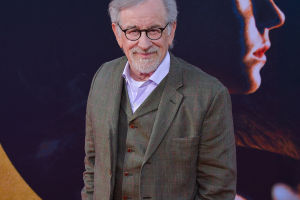The relationship between literature and cinema is fascinatingly complex.
Some of the most beloved movies of all time have been adapted from books, but the process of translating a narrative from the page to the screen is fraught with challenges.
In this article, we'll explore how successful book-to-film adaptations balance the art of storytelling in both mediums, and the hurdles directors and screenwriters must overcome.
Challenges in Adapting Literature into Film
A book and a film are two entirely different forms of media. Novels provide ample space to develop intricate characters, complex subplots, and detailed settings. Readers can dive deep into the thoughts of a character, enjoying detailed internal monologues and emotions that would be difficult to convey visually.
Films, however, are a visual and auditory experience, and the narrative must be conveyed through dialogue, visuals, and sound. This fundamental difference often presents a significant challenge when adapting a book into a movie.
One of the most significant hurdles is condensing a lengthy novel into a manageable runtime. A typical feature film usually runs between 90 to 120 minutes, while books can span hundreds or even thousands of pages. Some scenes or subplots may need to be entirely omitted, or re-imagined to fit the pacing of the film. This is where the art of adaptation becomes crucial.
A successful film adaptation doesn't just copy the book; it captures the essence of the story while understanding that some elements need to be reinterpreted for the screen.
The Art of Balancing Literary Depth with Cinematic Pacing
While trimming down a book's contents is inevitable, filmmakers must ensure that they maintain the spirit of the original narrative. For example, think of the complexity and richness in J.R.R. Tolkien's The Lord of the Rings. The novels are long, intricate, and filled with rich lore. The film adaptations, while cutting out many characters and scenes, focused on the essential storyline and themes, allowing the cinematic version to resonate with audiences.
However, capturing literary depth on film often requires creative choices. In The Great Gatsby, for instance, Baz Luhrmann's visually dazzling adaptation employed the use of modern music to emphasize the opulence and decadence of the Jazz Age. This decision, while far from literal, gave the film a unique flavor and allowed it to communicate the core themes of excess and superficiality in a new, impactful way.
By blending modern and historical references, Luhrmann achieved a synthesis between the written word and filmic representation.
Character Development and Casting Choices
In literature, character development is often painstakingly detailed, and we are privy to the internal thoughts and motivations of the protagonist. On screen, the audience can't hear a character's thoughts, so visual cues, acting, and dialogue become crucial in conveying depth.
Take, for example, Harry Potter and the Sorcerer's Stone. The books spend considerable time detailing Harry's internal struggles and his connection to the wizarding world. However, in the films, these struggles had to be shown through the actor's expressions, reactions, and minimal but poignant dialogue.
Daniel Radcliffe's portrayal of Harry wasn't just about following a script; it was about expressing the soul of the character without the luxury of long monologues or thought-provoking paragraphs.
Casting also plays a pivotal role. Filmmakers often rely on casting choices that not only match the physical traits of the characters but also bring their personalities to life. A perfect example is Ian McKellen as Gandalf in The Lord of the Rings series. McKellen's gravitas and warmth brought Gandalf's wisdom and strength to life, something that might have been difficult to achieve on paper.
Adapting the Themes: Staying True to the Author's Vision
Another key element in adapting books into films is staying true to the themes and underlying messages of the original work. It's not uncommon for movies to diverge from the book in order to fit into a specific genre or style of filmmaking, but this can often alter the heart of the story.
In To Slay a Mockingbird, the film adaptation was careful to stay faithful to the novel's key themes of racial injustice and moral courage. The movie condensed the novel's plot while focusing on Scout's coming-of-age journey and the story's social commentary. This streamlined approach allowed the movie to maintain its critical message while fitting within the constraints of a feature film.
However, sometimes filmmakers choose to emphasize different aspects of a story, which may result in a shift in tone. In The Shining, Stanley Kubrick's 1980 adaptation, he made significant departures from Stephen King's original novel, especially in terms of Jack Torrance's characterization.
The movie presented a more ambiguous portrayal of Jack, which shifted the focus of the story from personal tragedy to supernatural horror. King, who had a strong attachment to his novel, was critical of the film, but many regard Kubrick's version as a horror masterpiece in its own right.
The Role of Visual Storytelling in Adaptation
Books often provide vivid descriptions of settings, but films have the distinct advantage of directly presenting the environment through cinematography. This makes visual storytelling a key factor in adaptations. The lush, green landscape of The Secret Garden, for instance, becomes an essential character in the film, visually communicating the themes of growth, renewal, and nature's power in a way that words on a page might struggle to convey.
Furthermore, adaptations often rely heavily on soundtracks and sound design to enhance the emotional experience. A score can add another layer of depth to a film, elevating the emotions conveyed in the story. This is especially true for movies that deal with complex emotional themes, like The Fault in Our Stars, where the soundtrack helped underscore the poignancy and gravity of the characters' situations.
Conclusion: Embracing the Adaptation Process
Adapting a book into a movie is no small feat. It requires a deep understanding of both mediums and a balance between staying true to the original narrative while embracing the unique possibilities that film offers. Filmmakers must be careful not to lose the essence of the book while also considering how to tell a visually compelling story within the time constraints of a movie.
The key to a successful adaptation lies in recognizing that film and literature are different languages of storytelling. When executed well, a book-to-film adaptation can enhance the original narrative, introducing it to a wider audience while keeping the heart of the story intact. Whether it's through innovative visual techniques, carefully chosen casting, or preserving the central themes, the best adaptations are those that resonate with both fans of the original book and newcomers alike.


